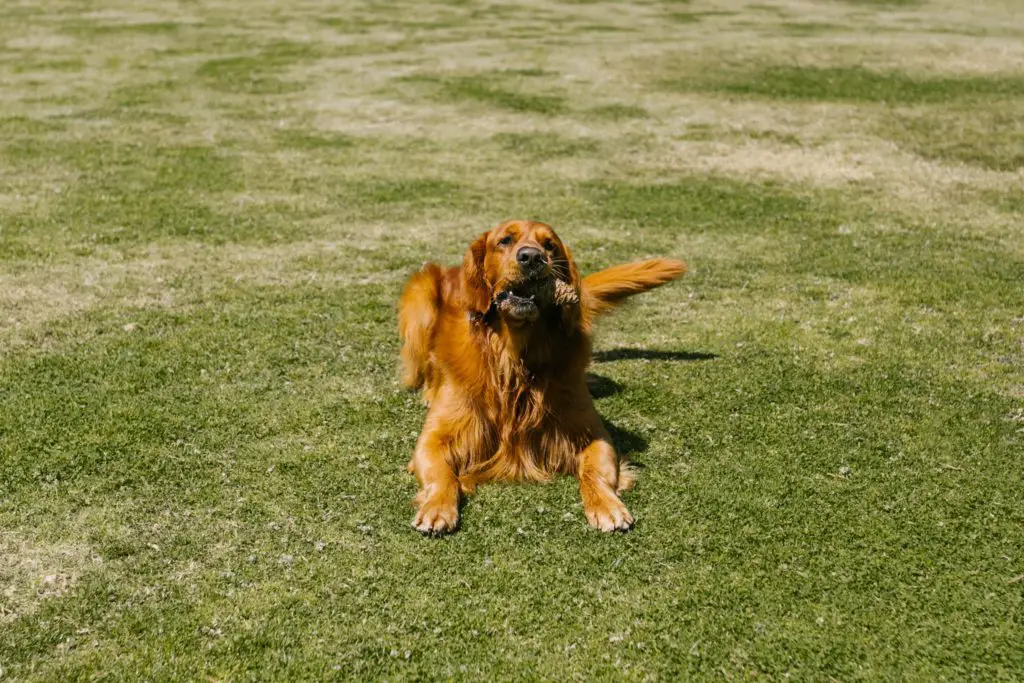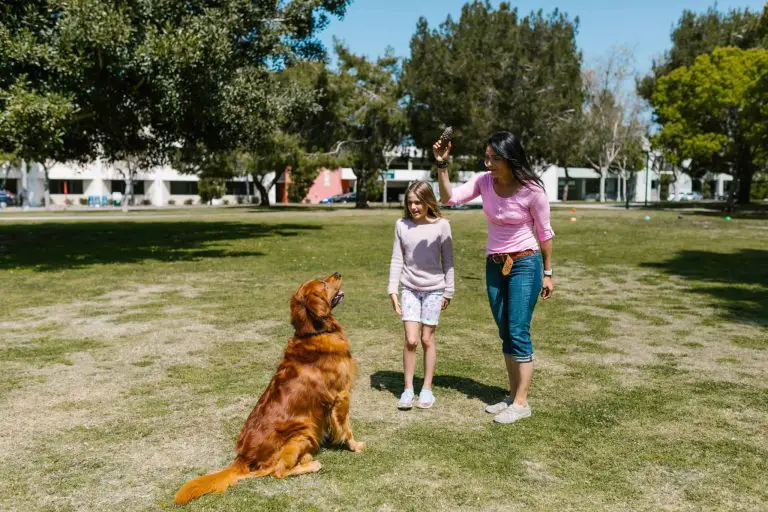Teaching your dog fun tricks is a great way to have fun with your canine. Learning how to teach your dog to roll over is one trick that can be a fun challenge for you and your dog. Two basic commands to teach your dog before moving on to tricks is the “sit” command and the lie “down” command.
The best way to begin learning how to teach your dog to roll over is to break it down into smaller approximations or steps for your dog. Next, find a softer surface like a mat or rug that has some cushion to it.
Related Articles:
- How to Train a Deaf Dog to Stop Barking
- How to Train Your Dog with Positive Reinforcement
- How to Crate Train a Dog
- How to Train Your Dog to Walk on a Leash
- How to Train Your Dog to be Social
5 Steps on How to Teach Your Dog to Roll Over
If your dog works for food rewards, grab small, tasty treats to have in a treat pooch or your pocket before calling your dog over to begin learning tricks.
- Down Position. Teach your dog the “down” position on the mat. Once your dog is in the “down” position on a mat or large rug you can move on to the next step.
- Lure to Shoulder. Kneel beside your dog and have a small treat ready to use in your hand. Let your dog smell the treat and begin to move it over their shoulder. They will follow the treat and begin doing a half roll. Repeat this motion with praise and treats.
- Half Roll Onto their Back. Lastly, continue the movement from their shoulder to their backbone. Your dog should now be rolled onto their back. Continue moving your hand (with the treat) until they are completely rolled over.
- Complete Roll. Repeat several times and then name this trick, “roll over”. Eventually your dog will be able to perform the trick without the lure and on the verbal cue alone.
Related Articles:
- How to Get the Attention of a Deaf Dog
- How to Train a Deaf Dog to Sit and Stay
- How to Train a Deaf Dog with Hand Signals
- How to Potty Train a Deaf Dog
- Basic Dog Training Commands
When to Give the “Roll Over” Trick a Name
As you begin to teach your dog any new skill, including tricks, it is best not to give the position a name quite yet, wait until they begin to understand it. When you are teaching your dog “down”, you will not use that word until they consistently move into the down position. Use the same training protocol when going through the steps of how to teach your dog to roll over.
After your dog smoothly goes through the steps of roll over, you can begin to give the trick a name. You will still use the treat to initiate the trick, as they begin to move their nose towards their shoulder for the roll, use the command “roll over.”
Keep practicing the roll over with a tasty treat lure and naming the motion “roll over”.
Related Articles:
- Ultimate Guide: How To Take Care Of A Puppy
- Ultimate Guide: How To Take Care Of A Dog
- Ultimate Guide: How To Take Care Of A Senior Dog
- The Benefits of Owning a Dog
- Top 12 Tips for First Time Dog Owners
Tips on How to Teach Your Dog to Roll Over
Success on the very first “roll over” practice session is unusual. All dogs learn at different paces; therefore, it is always good to have lots of patience and tasty treats. Puppies can get aroused easily and begin to move out of position quickly. When you need extra instruction, try these 4 tips for how to teach your dog to roll over.
- A Solid Down. When your dog keeps jumping up out of the down position: practice the down position in short training sessions throughout your day. When your dog is in the down, place a treat between their paws and say the command “down”. It is helpful to keep practicing until your dog learns to stay in the down longer.
- Nose to Shoulder. Teach your dog to follow a lure/treat in short training sessions. Practice with your dog following the treats from their nose to the shoulder. Repeat until your dog turns their head to follow your hand and treat consistently.
- Partial Roll. Reward your dog for small steps. As your dog begins to understand they are learning a new skill, you can increase your criteria. Begin rewarding your dog every time they move their nose to shoulder and are laying on their side.
- Full Roll. As your dog consistently rolls over on their side, use your hand to direct them onto their back. Praise and reward your dog with a treat.
When you break the “roll over” skill into smaller motions, your dog will begin to understand what you are trying to teach them. Reward and praise your dog for their progress.
Eventually you will be able to give the command “roll over” and your dog will know exactly what you want them to do. Your dog will perform this trick without step-by-step guidance and treats.
Related Articles:
- How to Train a Dog to Run Next to a Bicycle
- How to Teach an Older Dog New Tricks
- How to Train a Deaf Dog
- The Top 12 Fun and Easy Dog Tricks
- How to Train a Dog

Roll Over on Command Without Treats
Now that you have learned how to teach your dog to roll over, you can begin to back off on giving them treats. When you give the command “roll over”, give your dog a moment to process and begin the motion. It is easier to begin with your dog in the “down” position.
The goal is to have your dog move through the “roll over” without your guidance. It really depends on the dog how fast they understand the new trick. Some food orientated dogs may only move (at first) with treat motivation.
Begin with increasing your criteria for a treat. Guide your dog into the roll and once they get halfway, you can treat or let them finish the roll. In a short amount of time, you will be just offering praise and a treat for a full roll over.
Related Articles:
- How to Obedience Train Your Dog
- How to Leash Train Your Dog
- How to Get Rid of Dog Warts at Home
- How to Housebreak or Potty Train Your Puppy
- How to Clicker Train Your Dog
Praise for How to Teach Your Dog to Roll Over
Spending time training your dog tricks builds confidence in the dog and trust in you. When you have a dog that feels vulnerable about showing their belly or rolling onto their back, you will move even slower through the steps.
As with all training sessions with your dog, the frequency of training is more important than the length of time. It is always best to stop training when you and your dog become frustrated. You and your dog should be able to look forward to daily training sessions.
Tricks should be fun for you and your dog. It helps if you are relaxed and add a smile to your voice. Your dog will sense the playful nature of your time together and be less on guard.
Please read our Legal Disclaimer

